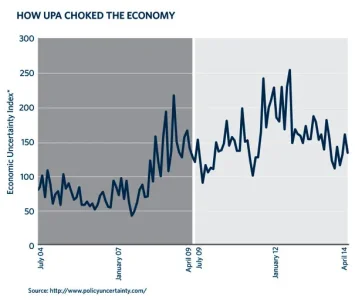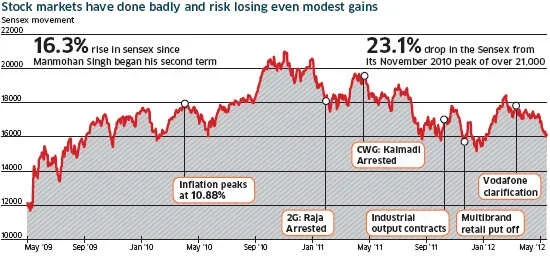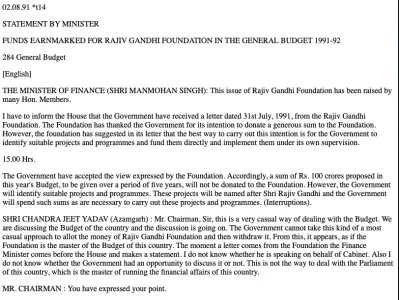Roads, Railways And More: Nirmala Sitharaman's UPA Vs NDA Comparison On Infrastructure Development Explained In 8 Points
infrastructure development under the Congress-led UPA (2004-2014) and BJP-led NDA (2014-2024) governments. Here are eight major takeways:
1. Border infrastructure: She said that while then Defence Minister AK Antony under the UPA government believed, "An undeveloped border is safer than a developed border," PM Narendra Modi believes that border villages are India’s first villages.
"Through the ‘Vibrant Villages Programme’, we are developing the border villages and strengthening their infrastructure," Sitharaman asserted.
"Budget for BRO (Border Roads Organisation) increased by almost 4 times from Rs 3,782 crore in 2013-14 to Rs 14,387 crore in 2023-24. -6,806 km of Border Roads were constructed between 2014-22, compared to 3,610 km in 2008-14," she added.
2. Turnaround pace: She claimed that while infrastructure projects were "held up for investment on account of delays in obtaining various approvals/clearances" under UPA rule, "PM Modi’s active role has made the infrastructure turnaround possible."
"PM has personally monitored the progress of projects, even those launched earlier, through the PRAGATI platform. This led to the successful completion of long-delayed projects. Through 43 PRAGATI meetings, PM Modi has reviewed projects worth Rs 17.36 lakh crore."
3. Expenditure on infrastructure: "Share of Capex in total expenditure dropped sharply under the UPA. From 23 per cent in 2003-04, it dropped quickly to an average of 12 per cent from 2005-2014," Sitharaman said.
"Our government significantly increased the outlay for capex. As a proportion of total expenditure, Capex rose to over 21 per cent in 2023-24, compared to just 12 per cent in 2013-14," she added.
"Since 2014, our government has allocated a total of Rs 43.53 lakh crore in Gross Budgetary Support (GBS) capital expenditure, an increase of 3.72 times compared to 2004-14," the Finance Minister continued
4.
Roads: "Since 2014, 3.74 lakh km rural roads has been built under the PM Gram Sadak Yojana, almost double of 3.81 lakh kms of rural roads built till 2014. Over 99 per cent of rural habitations are now linked with rural roads," she said.
"Since 2014, there has been a 500 per cent increase in the road transport and highway budget allocation," she claimed adding that National Highway (NH) network has expanded by 60 per cent in 2014-2023, compared to only 39 per cent expansion in 2004-14.
"Average pace of NH construction saw a remarkable increase from the baseline 12.1 km/day in 2014 to 34 km/day in 2023-24. -Share of 4 lanes NHs increased from 20 per cent to 30 per cent of the total NH network, improving the logistics efficiency," she added.
5. Railways: "Railway Board took an average of 43 months to sanction rehabilitation of bridgeworks, and they were completed with an average delay of 41 months" in UPA era as per CAG report 2014 quoted by Sitharaman.
She asserted that PM Modi worked for modernisation of Railways with modern stations, modern trains, modern facilities and modern technology, upgrading railway tracks and rakes for high-speed travel.
"In 2023-24, Allocation for Railways’ capex increased to Rs 2.43 lakh crore. It is 30 times increase over 2004-05, and eight times increase over 2013-14... The pace of electrification has jumped almost 10 times, from only 1.4 RKM/day electrification in 2004-2014 to 11.4 RKM/day in 2014-2024," she said.
"Under UPA, 14,985 RKM of rail track work was done whereas in the last 9 years (2014-23), 25,871 RKM of track laying work has been done. From 4 km per day in 2014, the Indian Railways achieved daily track laying of 14.5 km in 2023-24 (5,300 km)," she further added.
6. Power: "Under PM Modi, India has transformed from power-deficient to power-sufficient by adding 193 GW of generation capacity (249 GW to 442 GW)," in which share of renewable energy sources in total installed capacity increased from 14.1 per cent to 32.5 per cent.
"As of November 2023, the availability of power in rural areas increased from 12 hours in 2015 to 20.6 hours, and in urban areas, it increased to 23.8 hours. 100 per cent rural electrification was achieved in 2018," Sitharaman said.
7. Metro: "Since 2014, the Metro network has expanded around four times, from 248 km of operational lines in 5 cities to 939 km in 20 cities," the Finance Minister said adding that Delhi-Meerut RRTS corridor will be completed by June 2025.
8. Aviation: "India’s aviation network has doubled with the construction of 83 new airports since 2014. Operational Airports up from 74 in 2014 to 157 in 2024," she said.
"The passenger traffic has increased from 169 MPPA (Million Passengers Per Annum) in 2014 to 376 MPPA in 2024. -559 routes were operationalised under UDAN Scheme, which improved air connectivity to underserved regions," she added.

















